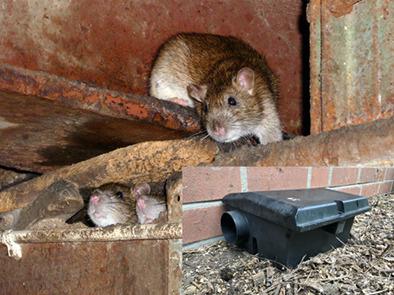当前位置:
X-MOL 学术
›
Pest Manag. Sci.
›
论文详情
Our official English website, www.x-mol.net, welcomes your
feedback! (Note: you will need to create a separate account there.)
Baiting location affects anticoagulant rodenticide exposure of non-target small mammals on farms.
Pest Management Science ( IF 3.8 ) Pub Date : 2020-07-06 , DOI: 10.1002/ps.5987 Bernd Walther 1 , Anke Geduhn 1 , Detlef Schenke 2 , Annika Schlötelburg 1 , Jens Jacob 1
Pest Management Science ( IF 3.8 ) Pub Date : 2020-07-06 , DOI: 10.1002/ps.5987 Bernd Walther 1 , Anke Geduhn 1 , Detlef Schenke 2 , Annika Schlötelburg 1 , Jens Jacob 1
Affiliation

|
Commensal rodents such as Norway rats (Rattus norvegicus Berk.), black rats (R. rattus L.) and house mice (Mus musculus L.) damage stored produce and infrastructure, cause hygienic problems and transmit zoonotic pathogens to humans. The management of commensal rodents relies mainly on the use of anticoagulant rodenticides (ARs). ARs are persistent and bio‐accumulative, which can cause exposure of non‐target species. We compared the baiting strategies to use brodifacoum (BR) in bait boxes indoors only versus in and around buildings in replicated field trials at livestock farms to assess resulting BR residues in non‐target small mammals.
中文翻译:

诱饵的位置会影响农场中非目标小型哺乳动物的抗凝血灭鼠剂暴露。
普通啮齿类动物,例如挪威鼠(Rattus norvegicus Berk。),黑鼠(R. rattus L.)和家鼠(Mus musculus L.)会损坏储存的农产品和基础设施,引起卫生问题并将人畜共患病原体传播给人类。日常啮齿类动物的管理主要依靠使用抗凝灭鼠剂(ARs)。AR具有持久性和生物蓄积性,可能导致非目标物种暴露。我们比较了鱼饵箱室内只有引诱战略,利用溴鼠灵(BR)与和周围的养殖场在重复的田间试验建筑评估导致非靶小型哺乳动物BR残留物。
更新日期:2020-07-06
中文翻译:

诱饵的位置会影响农场中非目标小型哺乳动物的抗凝血灭鼠剂暴露。
普通啮齿类动物,例如挪威鼠(Rattus norvegicus Berk。),黑鼠(R. rattus L.)和家鼠(Mus musculus L.)会损坏储存的农产品和基础设施,引起卫生问题并将人畜共患病原体传播给人类。日常啮齿类动物的管理主要依靠使用抗凝灭鼠剂(ARs)。AR具有持久性和生物蓄积性,可能导致非目标物种暴露。我们比较了鱼饵箱室内只有引诱战略,利用溴鼠灵(BR)与和周围的养殖场在重复的田间试验建筑评估导致非靶小型哺乳动物BR残留物。









































 京公网安备 11010802027423号
京公网安备 11010802027423号